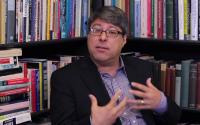1 December 2006Jonathan Brown, Andrew Grice and Steve Bloomfield
Today is World Aids Day. It was first marked in 1991, an attempt by the international community to alert humanity to the terrible scale of the threat posed by the disease.
Yet despite advances in medical science and a growing political consensus over the need to act, the epidemic shows no signs of abating. In fact, it is getting worse.
According to the United Nations, some 25 million people have already died from Aids. A further 40 million men, women and children are living with HIV. Since the turn of the millennium, 24.2 million people have been infected, 15.6 million have died.
If the world continues on its present course, Aids is set to surpass the Black Death of the 14th century as the deadliest outbreak of disease in human history.
World Aids Day will see millions marking their solidarity with those affected by the virus. Charities, campaigners and politicians from Africa to the Americas will speak of their plight and reveal the work that is going on to help them.
But the story of the battle against the epidemic reveals a world divided. A gulf exists between sufferers living in poverty in sub-Saharan Africa and other parts of the developing world and those in the rich nations of Europe and North America.
The emergence of antiretroviral drugs, hailed by researchers as a "miracle" on a par with the discovery of penicillin, means that in the affluent West at least, HIV is now a treatable disease. The tragic irony is that in Britain infection rates among some communities continue to rise. It was reported last week that incidences among gay men had reached their highest level since 1981 as safe sex practices were being ignored.
In Africa it is a different story. In Rwanda, where rapid advances in treatment have helped hundreds of thousands, doctors call it the "Lazarus effect" - just two antiretroviral drugs can restore a stricken patient to almost full health. Costing less than a dollar a day, they can be bought from any corner shop.
The tragic irony here is that even at this price, they are too expensive. Africa is seeing the fastest growth of any region of the world with an infection rate of 15 per cent. Perhaps hardest hit are the 2 million HIV-affected children of the region, who contracted the virus in the womb or during breastfeeding. Global drug-makers have little interest in making smaller doses of their life-saving medicines. The bigger profits are in the markets of the developed world among the sick, rich adults.
So doctors in Africa are forced to crush adult pills into child-sized doses. However, a deal will be announced today between two Indian drug-makers and former US president Bill Clinton's foundation which promises to reduce dramatically the cost of treating children infected with HIV-Aids next year.
But in some countries the threat of Aids is compounded by political failure. In Zimbabwe, President Robert Mugabe has promoted traditional medicines over antiretrovirals and displaced 1 million of his poorest urban citizens, disrupting their treatment and increasing the infection rates in rural areas.
And even science has its limits. The hunt for a vaccine two decades after it was claimed to be just five years away from completion remains as elusive as ever.
The British International Development Secretary, Hilary Benn, warned last night that the world may miss its target of providing universal HIV prevention care and treatment by 2010 unless the "stigma and prejudice" surrounding the disease is tackled. "We mustn't let our discomfort or prejudice get in the way of saving lives," he told a lecture at the London School of Economics to mark World Aids Day.
However, the Government was condemned for its policy of deporting asylum-seekers who are HIV positive back to their home countries, where treatment is often not available. The Refugee Council said they should be given special dispensation to stay.
http://news.independent.co.uk/world/science_technology/article2029298.ece






